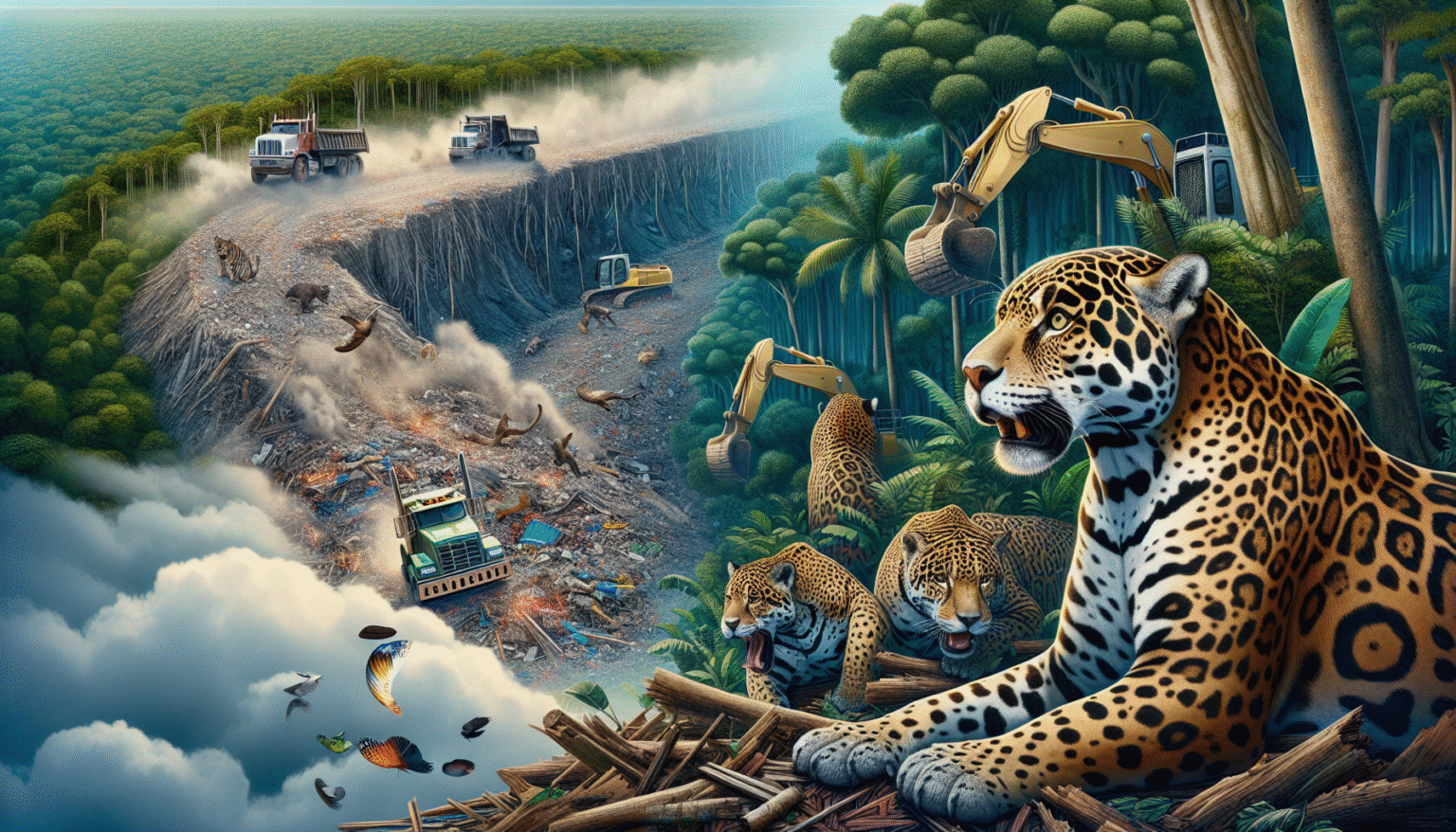The Decline of Tulum’s Jaguar Population
Tulum, a small coastal town located in the Mexican state of Quintana Roo, is renowned for its stunning beaches and ancient Mayan ruins. However, its lush tropical forests and diverse ecosystems are under significant threat due to deforestation. Among the countless species affected by habitat loss is the majestic jaguar (Panthera onca), which plays a crucial role as an apex predator in its habitat. This article explores the profound impact of deforestation on Tulum’s jaguars, highlighting various aspects such as habitat fragmentation, prey depletion, human-jaguar conflict, and conservation efforts.
Habitat Fragmentation
As Tulum experiences accelerated urbanization and tourism development, large swaths of forest are cleared to make way for hotels, residential complexes, and infrastructure projects. This deforestation leads to habitat fragmentation, which isolates jaguar populations. The jaguar requires expansive territories that allow for adequate movement in search of food, mates, and safe denning sites. These large cats typically roam over hundreds of square miles; however, fragmented habitats significantly reduce their roaming range, leading to genetic isolation and decreased biodiversity.
Furthermore, habitat fragmentation can disrupt the connectivity between jaguar populations, making it difficult for them to mate with other individuals from different areas. Studies have shown that a decline in genetic diversity can lead to weakened populations, making them more susceptible to disease and reducing their resilience to environmental changes.
Prey Depletion
Jaguars are carnivorous and rely on a variety of prey, including deer, peccaries, and capybaras, which also inhabit the forested areas of Tulum. Deforestation disrupts the food chain, leading to a decrease in prey availability. With their food sources diminished, jaguars face starvation and must adapt to hunting smaller animals or venture into human-inhabited areas, which can often lead to conflict.
The loss of prey not only impacts the jaguar’s feeding habits but also the ecological balance of the region. As apex predators, jaguars help regulate populations of herbivores, preventing overgrazing and promoting healthy vegetation growth. The decline of jaguars due to prey depletion consequently endangers the overall health of the Tulum ecosystem.
Human-Jaguar Conflict
With the push for urban development, jaguars are increasingly coming into close contact with human populations, which often leads to conflict. As their natural habitats diminish, these cats often venture into agricultural areas or near human settlements seeking food. Unfortunately, ranchers may view jaguars as threats to their livestock, resulting in retaliatory killings of these predators. Local communities may lack awareness about the ecological importance of jaguars, further exacerbating this issue.
The fear of jaguars can foster a negative perception, leading to a cycle of hostility that compromises conservation efforts. In some cases, education and wildlife management strategies are necessary to establish a coexistence model that benefits both the jaguars and the local communities.
Conservation Efforts
Recognizing the dire situation faced by Tulum’s jaguars due to deforestation, various organizations and governmental bodies are implementing conservation strategies. Programs aimed at habitat restoration focus on reforesting areas that have been cleared, while establishing protected zones to maintain ecological integrity. By creating wildlife corridors that connect fragmented habitats, these measures help facilitate the movement of jaguars between isolated populations.
Additionally, ecotourism has emerged as a potential conservation tool. Responsible tourism can provide local communities with economic benefits while fostering an appreciation for wildlife and their habitats. By highlighting the importance of preserving Tulum’s jaguars, ecotourism can shift perceptions and encourage collaborative efforts between conservationists and local residents.
Community Involvement
Community engagement is vital for the success of jaguar conservation initiatives. Local inhabitants can play a crucial role in protecting these magnificent creatures, and education is essential to inform them of their ecological value. Programs focused on raising awareness about the roles of jaguars in the ecosystem and promoting responsible land use can foster a sense of stewardship among residents.
Involving community members in monitoring jaguar populations and conducting habitat restoration projects empowers them to take an active role in conservation. When locals understand the long-term benefits of preserving jaguars and their habitats, they are more likely to support sustainable practices.
Policy Framework
An effective policy framework is essential to address the challenges posed by deforestation. Legal protections for critical habitats and legislation to halt illegal logging can provide a more stable environment for Tulum’s wildlife, including jaguars. Enforcement of conservation laws, along with incentives for sustainable land-use practices, can also deter deforestation.
Collaborations between government agencies, NGOs, and the private sector can enhance the effectiveness of conservation efforts. By establishing conservation plans that consider both ecological and socio-economic factors, stakeholders can work toward a harmonious balance between development and ecological preservation.
The Future of Tulum’s Jaguars
The future of Tulum’s jaguars hinges on a collective response to the threats posed by deforestation and habitat loss. While challenges remain significant, the resilience of these apex predators remains inspiring. By integrating ecological conservation with community involvement and sustainable development, there is hope for Tulum’s jaguars and the ecosystems that sustain them. Conservation efforts that incorporate local knowledge, prioritize habitat protection, and promote human-wildlife coexistence can pave the way for more sustainable development practices, thus securing a future where jaguars roam freely once again in the lush forests of Tulum.
Ultimately, addressing the impact of deforestation on Tulum’s jaguars requires a multifaceted approach combining scientific research, community engagement, policy intervention, and economic incentives. Through collaboration and commitment, it is possible to forge a sustainable path that respects both human development and wildlife conservation, ensuring that future generations will continue to appreciate the beauty and value of Tulum’s natural heritage.







